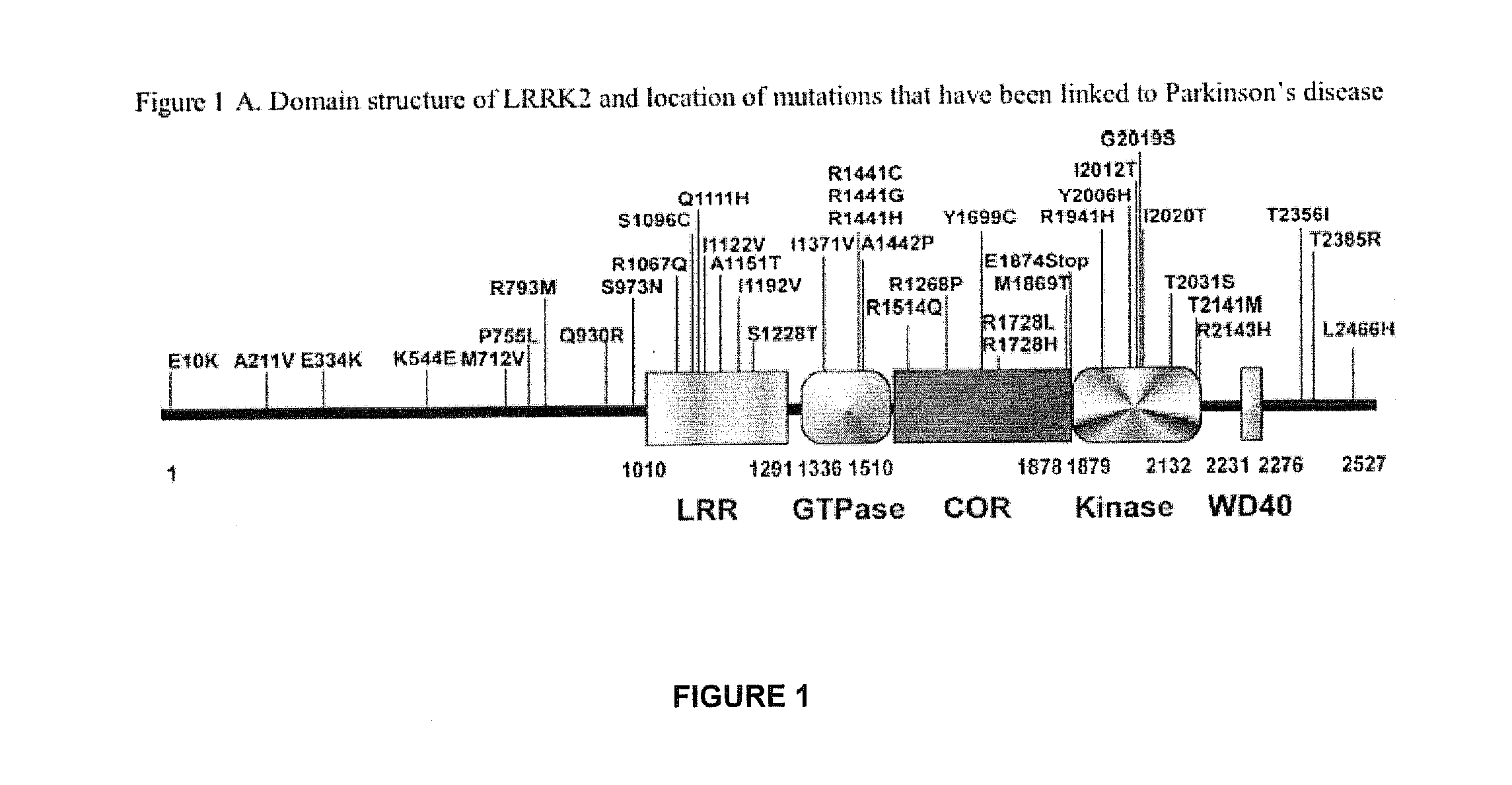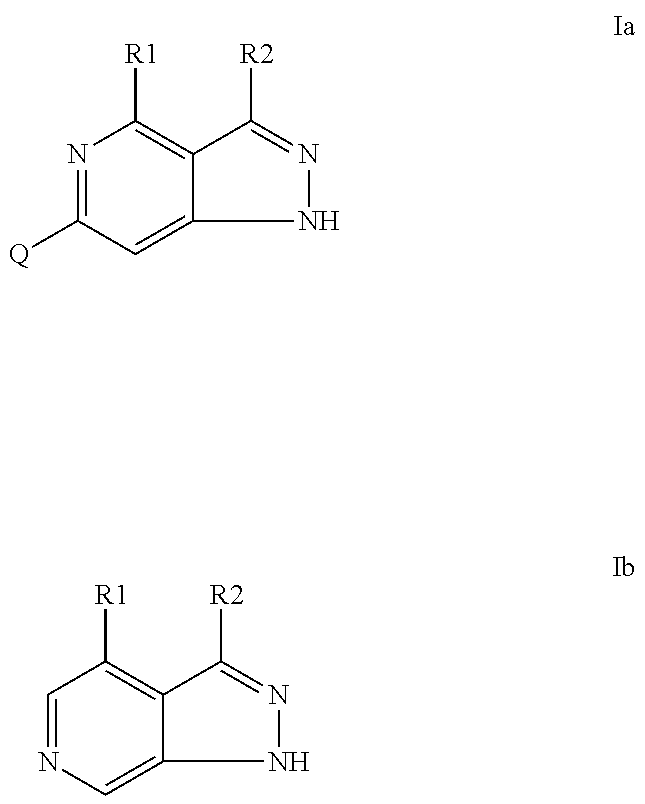Pyrazolopyridines as inhibitors of the kinase lrrk2
a technology of pyrazolopyridine and kinase, which is applied in the direction of biocide, heterocyclic compound active ingredients, drug compositions, etc., can solve the problems of hampered lrrk2 study and robust quantitative assay
- Summary
- Abstract
- Description
- Claims
- Application Information
AI Technical Summary
Benefits of technology
Problems solved by technology
Method used
Image
Examples
example 1
[0365]
[0366]A mixture of Intermediate 4 (33 mg, 0.163 mmol) and cyclohexylamine (19 μl, 0.163 mmol) in n-butanol (1 ml) was stirred at rt overnight, monitoring the reaction by LC / MS. The mixture was heated to 100° C. overnight and more cyclohexylamine (57 μl, 0.499 mmol) was added and stirring was continued at 100° C. overnight. The mixture was then diluted with ethyl acetate and washed with water and brine. The organic phase was dried and concentrated. The residue was purified by flash column chromatography on silica gel eluting with 2:1 petrol-ethyl acetate to give an off-white coloured solid (10 mg, 23%). 1H NMR (400 MHz, DMSO-d6) δ ppm 1.13-1.25 (m, 1H), 1.28-1.47 (m, 4H), 1.58-1.66 (m, 1H), 1.69-1.79 (m, 2H), 1.90-1.97 (m, 2H), 2.56 (s, 3H), 3.91-4.01 (m, 1H), 5.85 (d, J=7.8 Hz, 1H), 6.56 (s, 1H). m / z (ES+APCI)+: 265 / 267 [M+H]+
example 2
[0367]
[0368]Sodium hydride (60% dispersion in oil, 426 mg, 10.64 mmol) was added portionwise to a stirred solution of cyclohexanol (1.24 g, 12.38 mmol) in dioxane (15 ml) in a microwave reactor vial. The mixture was stirred at it for 45 minutes prior to addition of Intermediate 4 (500 mg, 2.48 mmol). The mixture was stirred at it overnight followed by irradiation in the Biotage 1-60 microwave reactor at 190° C. for 1 hour. The reaction mixture was added to ice and extracted with ethyl acetate. The organic phase was washed with brine, dried and concentrated. The residue was purified by flash column chromatography on silica gel eluting with 3:1 petrol-ethyl acetate to afford an oily solid, which was triturated with petrol to give a white solid (312 mg, 47%). 1H NMR (400 MHz, DMSO-d6) δ ppm 1.35-1.56 (m, 4H), 1.56-1.78 (m, 4H), 1.86-1.96 (m, 2H), 2.52 (s, 3H), 5.21 (dt, J=7.7, 3.7 Hz, 1H), 7.05 (s, 1H). m / z (ES+APCI)+: 266 / 268 [m+H]+.
example 3
[0369]
[0370]Example 2 (30 mg, 0.113 mmol) and morpholine (1 ml) were irradiated in the Biotage 1-60 microwave reactor at 200° C. for 5 hours. The mixture was concentrated to dryness and purified by preparative HPLC (high pH buffer), to give an off-white solid (5 mg, 14%). 1H NMR (400 MHz, DMSO-d6) δ ppm 1.37-1.53 (m, 4H), 1.57-1.77 (m, 4H), 1.85-1.93 (m, 2H), 2.43 (s, 3H), 3.25-3.33 (m, 4H), 3.68-3.74 (m, 4H), 5.17 (dt, J=7.4, 3.8 Hz, 1H), 5.99 (s, 1H). m / z (ES+APCI)+: 317 [M+H]+.
PUM
| Property | Measurement | Unit |
|---|---|---|
| Molar density | aaaaa | aaaaa |
| Molar density | aaaaa | aaaaa |
| Composition | aaaaa | aaaaa |
Abstract
Description
Claims
Application Information
 Login to View More
Login to View More - R&D
- Intellectual Property
- Life Sciences
- Materials
- Tech Scout
- Unparalleled Data Quality
- Higher Quality Content
- 60% Fewer Hallucinations
Browse by: Latest US Patents, China's latest patents, Technical Efficacy Thesaurus, Application Domain, Technology Topic, Popular Technical Reports.
© 2025 PatSnap. All rights reserved.Legal|Privacy policy|Modern Slavery Act Transparency Statement|Sitemap|About US| Contact US: help@patsnap.com



